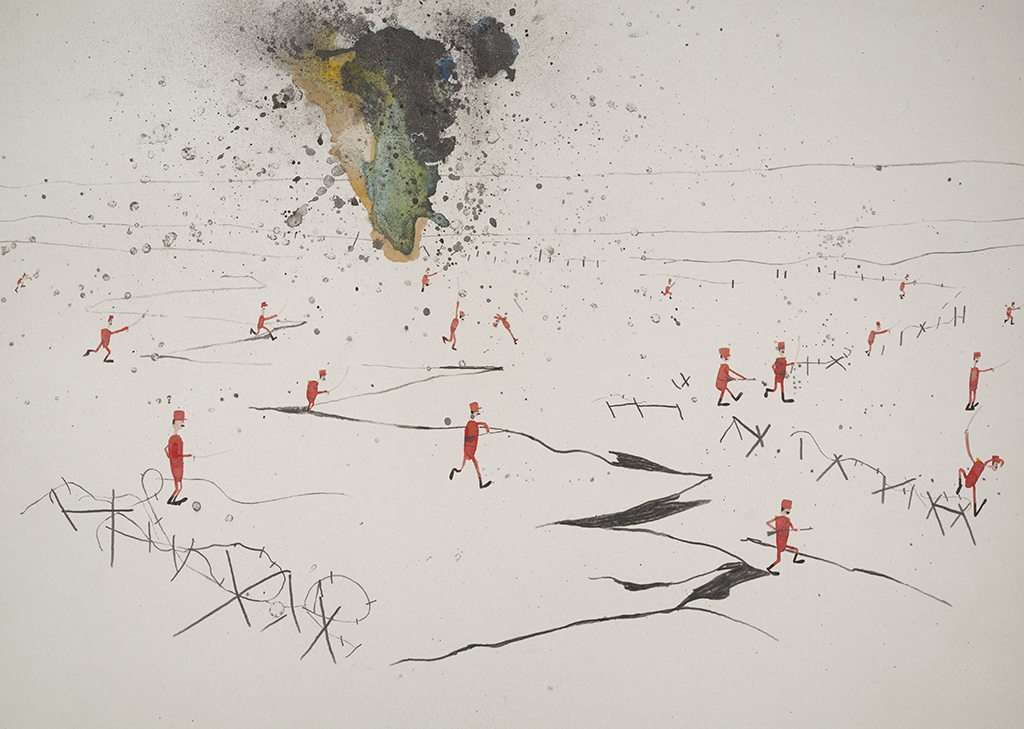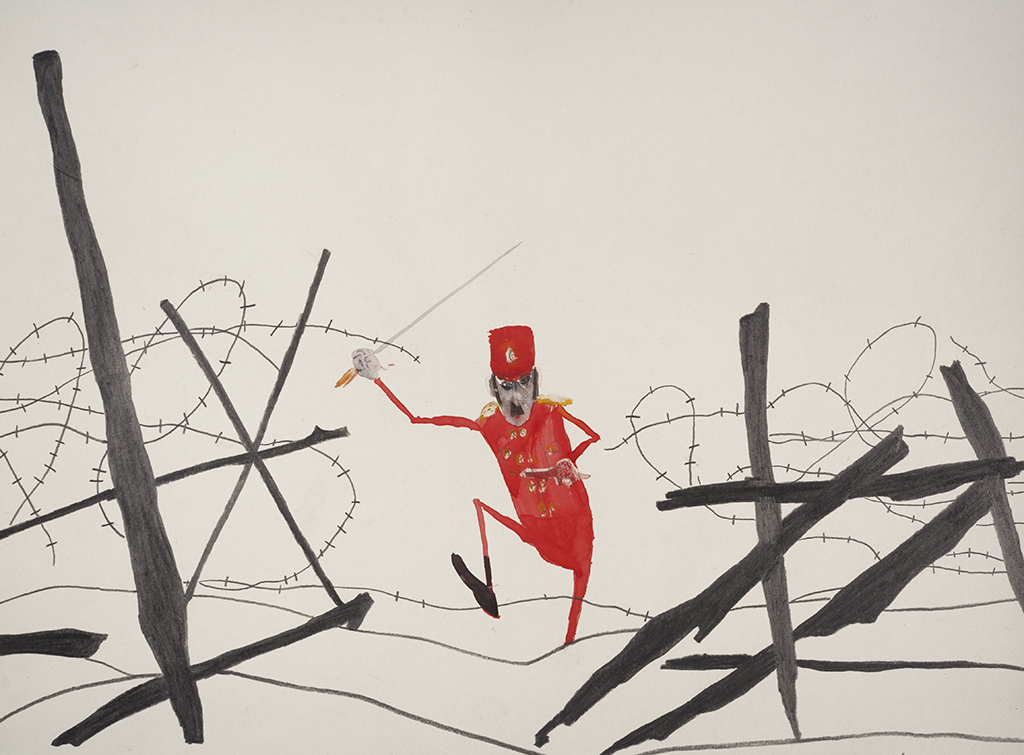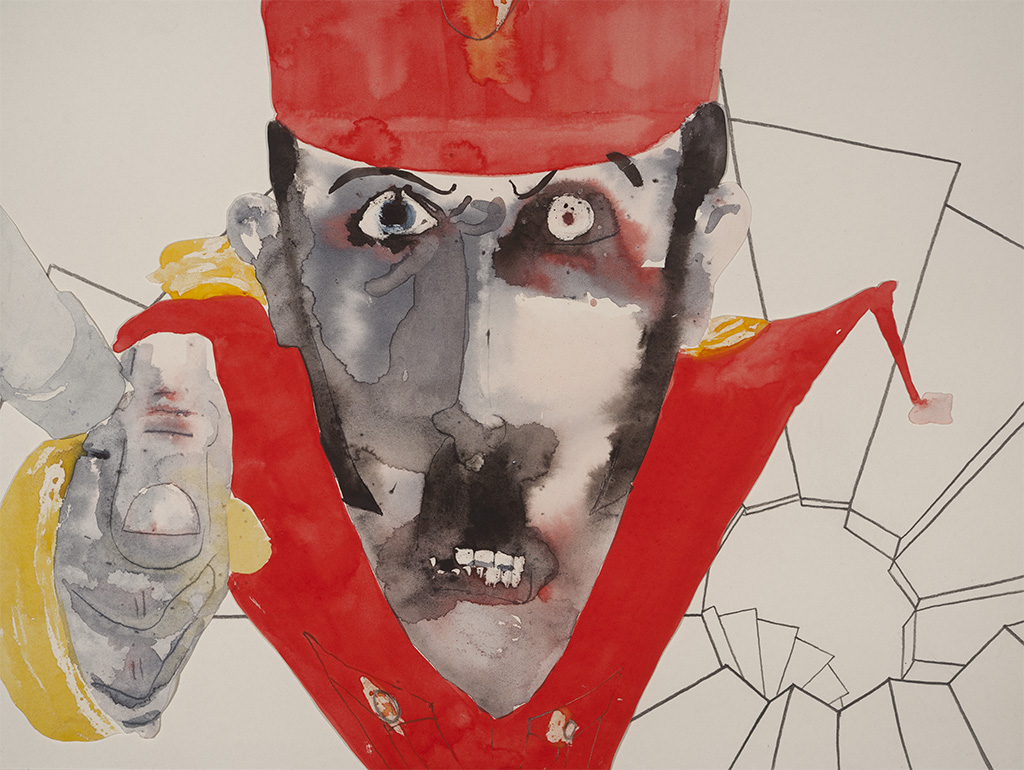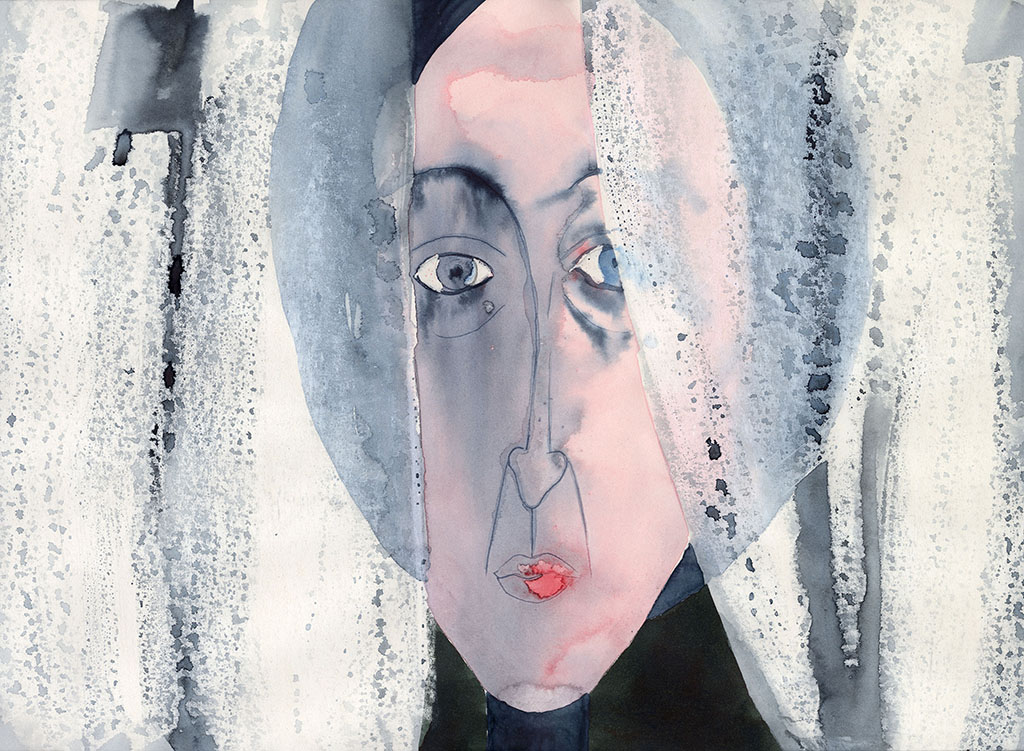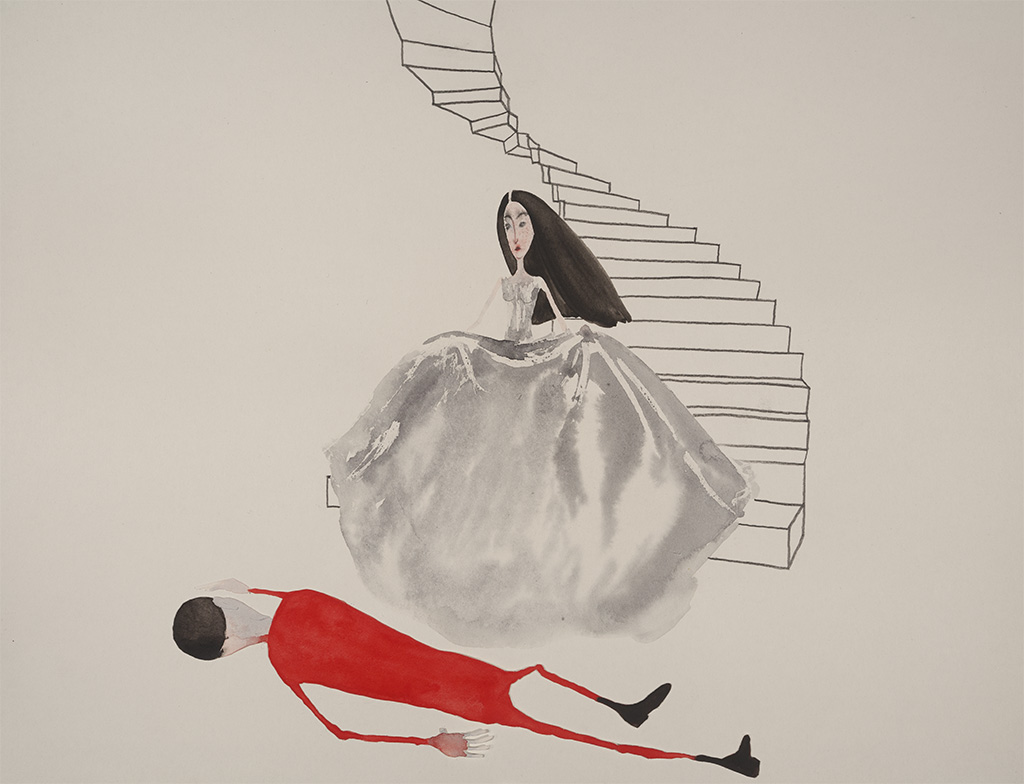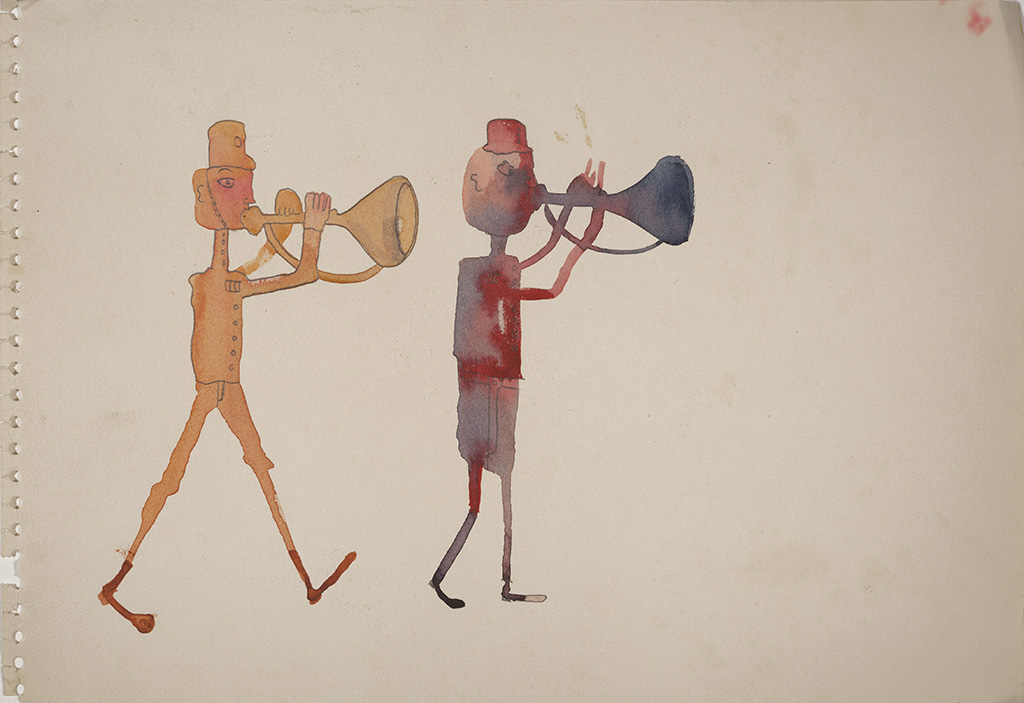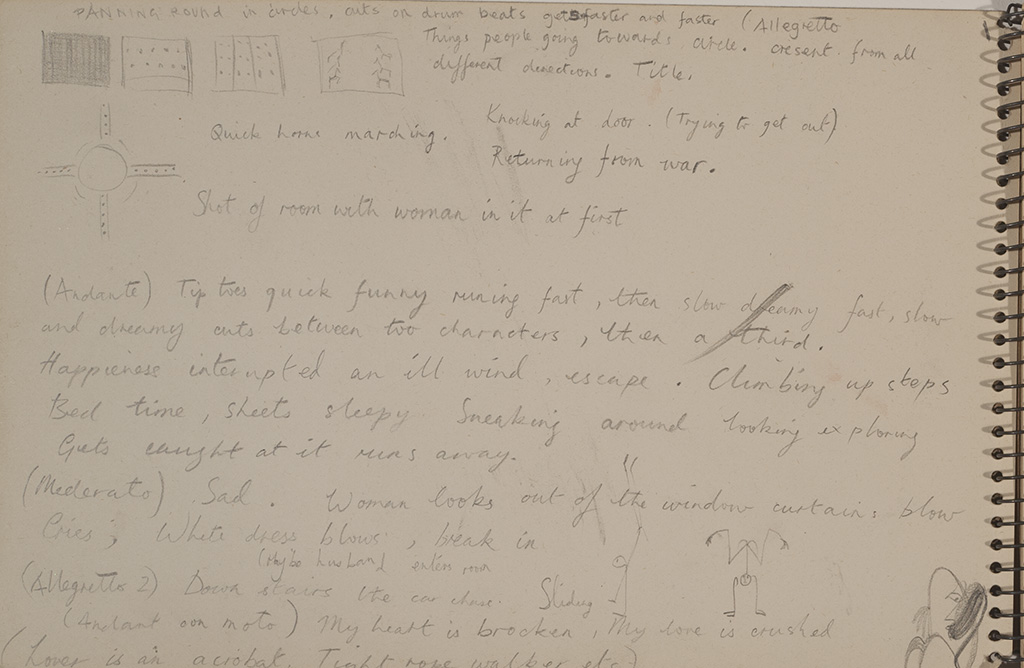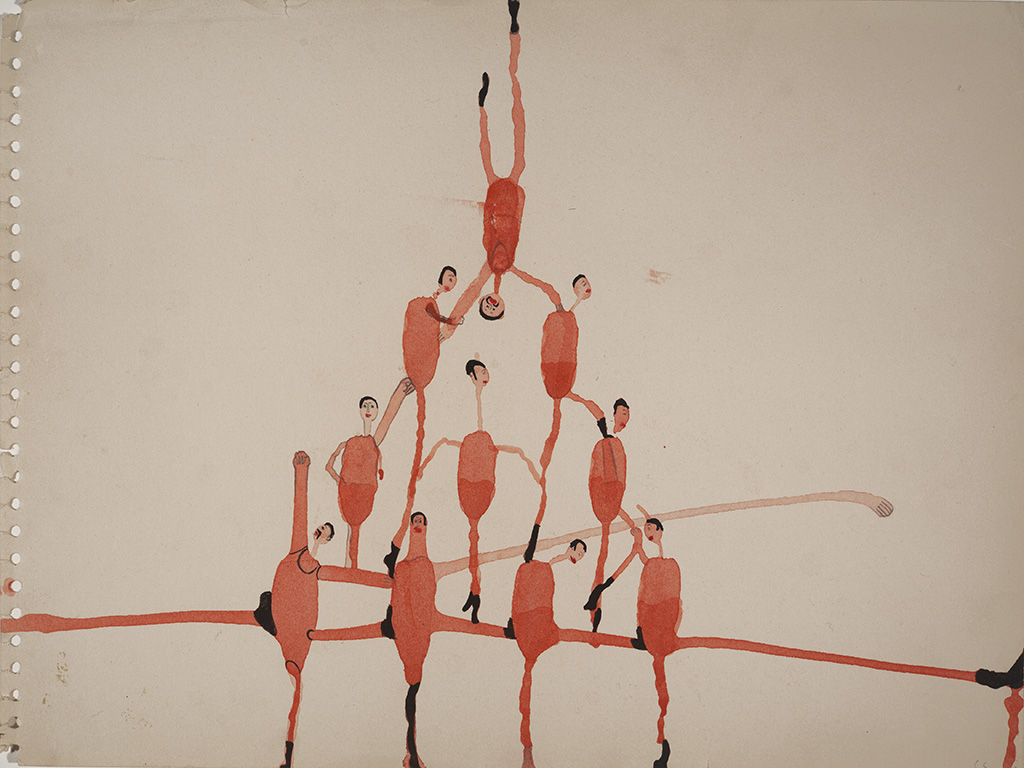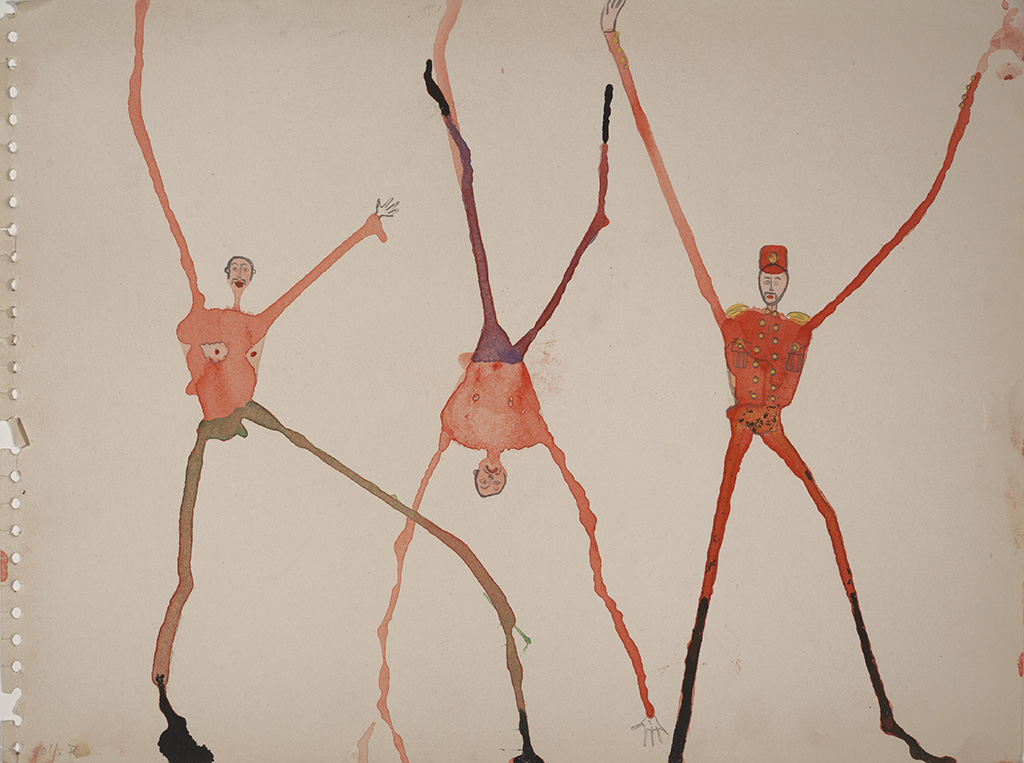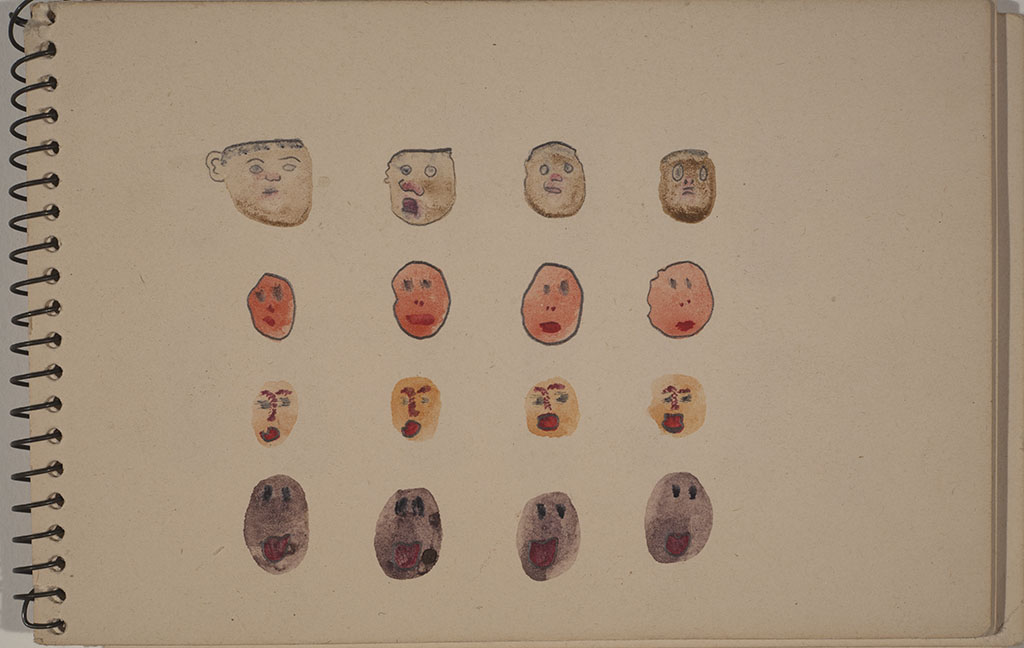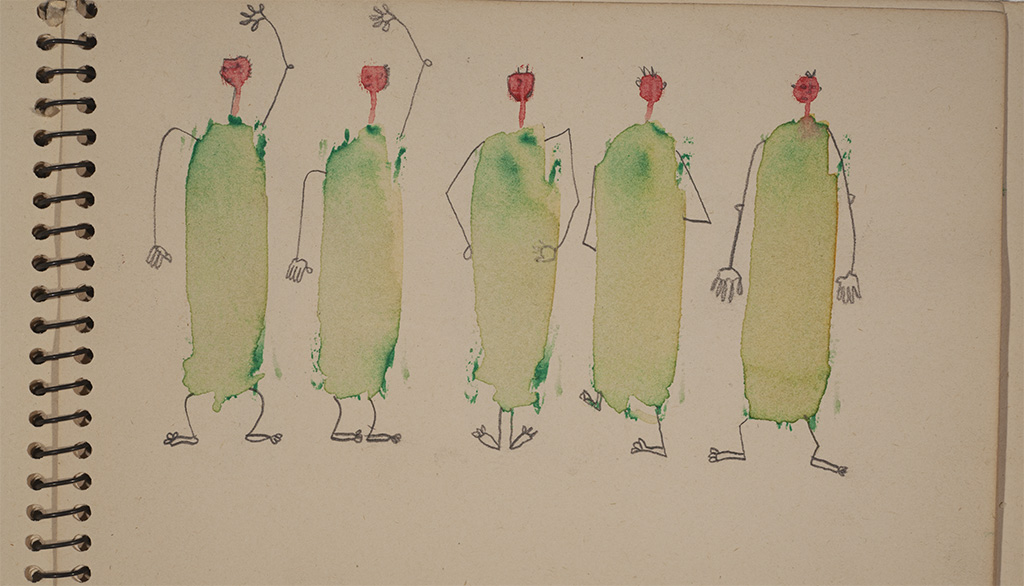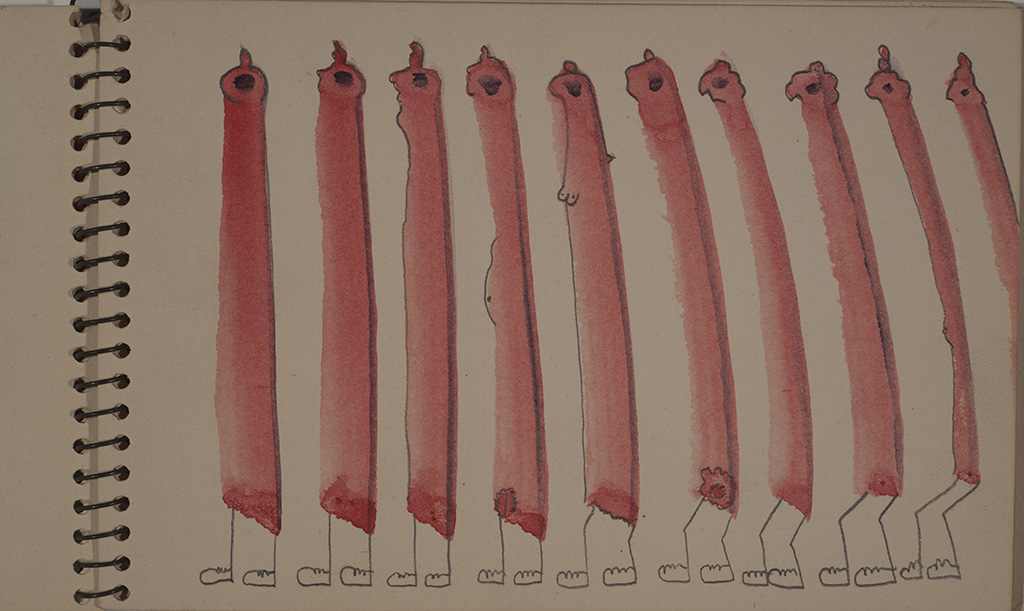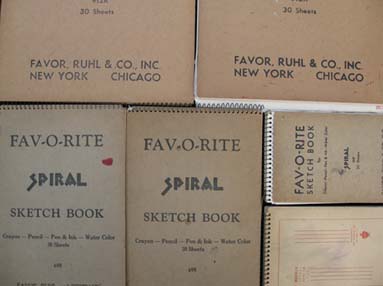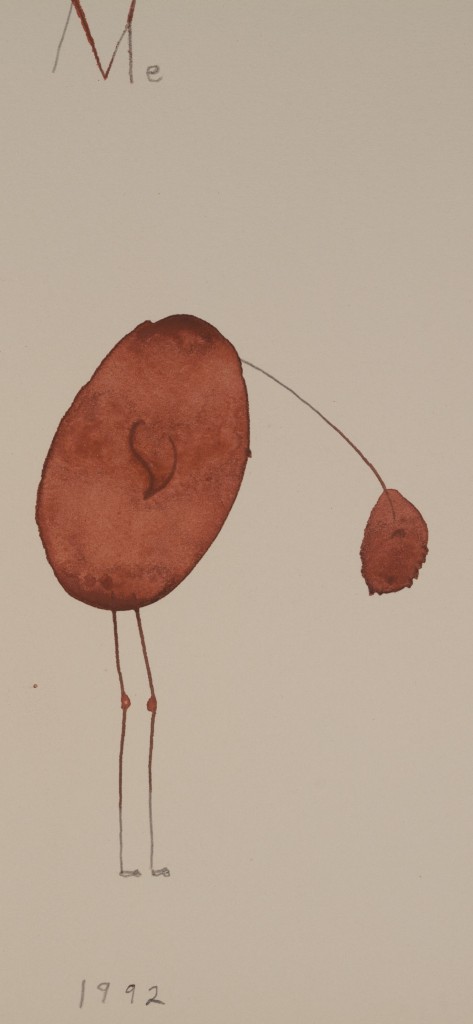The main theme of The Queen’s Monastery is love and war. Focusing on how war can change people beyond recognition.
Touching upon the idea of how killing and power are deep rooted sexual instincts. The original music by Leoš Janáček, The Sinfonetta (subtitled “Military Sinfonietta” or “Sokol Festival”) was written just after the end of World War One and the film is inspired by this and incorporates imagery from the battlefields.
The Queen’s Monastery. Conceived, animated and directed by EMMA CALDER. Music by Leoš Janáček. Produced by Pearly Oyster Productions 1998 © Pearly Oyster Productions/ BBC Bristol.
Short Synopsis: The film is about a woman whose lover, a former acrobat, has returned to her from war a changed man. Using a highly individual watercolour technique the narrative explores themes of love, escapist fantasy, obsession and guilt.
Background Detail: The woman cannot come to terms with her soldier lover who has changed so much due to the horrors of war. So she fantasises about the man he used to be. The soldier imagines that the woman loves someone else and that she has been unfaithful to him. Scenes of 1st world war battle scenes end with a tormented battle aggravated by the experiences of war, between the soldier and the acrobat on the spiral staircase to the monastery. The battle is not just a fight between two parts of self but, of a nation. (This links to the patriotic feeling in the music and to Czechoslovak history past and future).
Although much of the film is depicted through the actions of the male character it is the woman’s vision of the man she loves that we see, and it her feelings, traumas, and fight for happiness that we feel.
Festivals: The film had a very successful festival, cinema and TV outing for at least fours years after it was completed, I still get regular requests for screenings. For more info on festivals and prizes please look on the film page.
Future Plans: I am now planning to have an exhibition featuring artwork, scripts, notebooks from the film, alongside the film, to tie in with events planned around the centenary of World War One. Approx 15,000 pieces of artwork and animation drawings exist.
In addition it would be fantastic to have a live orchestra perform the piece. I had wanted Sir Charles Mackerras to conduct but, sadly he died. I wish I had tried to sort this out sooner but, I got so busy with other things.
To read about my latest commissioned film, please click here.

